Do you agree that having an online presence is important for your business?
Standing out among millions of websites is essential for any business aiming to capture attention and drive traffic. This is where search engine optimization (SEO) comes into play.
SEO is the practice of optimizing your website to rank higher in search engine results, making it more visible to an audience looking for information, products, or services you offer.
At the heart of SEO is a concept called keyword strategy.
Simply put, a keyword strategy is a plan for selecting and using the right words and phrases that audience type into search engines. These words, known as keywords, are what connect your content to the audience who are looking for it.
In this post, we’ll discuss everything you need to know about keyword strategy in SEO.
So, without any further ado, let’s get started!
Table Of Contents
1 What is a Keyword Strategy?
A keyword strategy is a carefully created plan that involves identifying, analyzing, and utilizing specific words and phrases that the audience enters into search engines to find information. These words and phrases, known as keywords, are essential in connecting your content with the right audience.
By understanding and targeting the terms that potential visitors use, you can optimize your website to rank higher in search engine results pages (SERPs), thereby increasing your site’s visibility and attracting more organic traffic.
Creating an effective keyword strategy involves several key steps.
It requires a deep understanding of your target audience—knowing what they are searching for and how they phrase their queries.
You use keyword research tools to identify potential keywords and analyze their metrics, such as search volume, competition level, and relevance. This analysis helps in selecting the most valuable keywords that offer a balance of high search volume and manageable competition.

Once the keywords are selected, they need to be strategically integrated into your website’s content, including titles, headings, meta descriptions, and body text.
This not only helps search engines understand the context and relevance of your content but also improves user experience by making your content more accessible and engaging.
2 How to Create a Keyword Strategy
Let us now discuss how to create a keyword strategy for your business.
2.1 Review Your Existing Rankings
Google Search Console is a free tool that shows your website’s average position for each keyword, the number of impressions (how often your site appears in search results), and the click-through rate (CTR).
By reviewing this data, you can pinpoint keywords with a high number of impressions but a low CTR.
In your Google Search Console account, navigate to Performance and select all the boxes, as shown below.
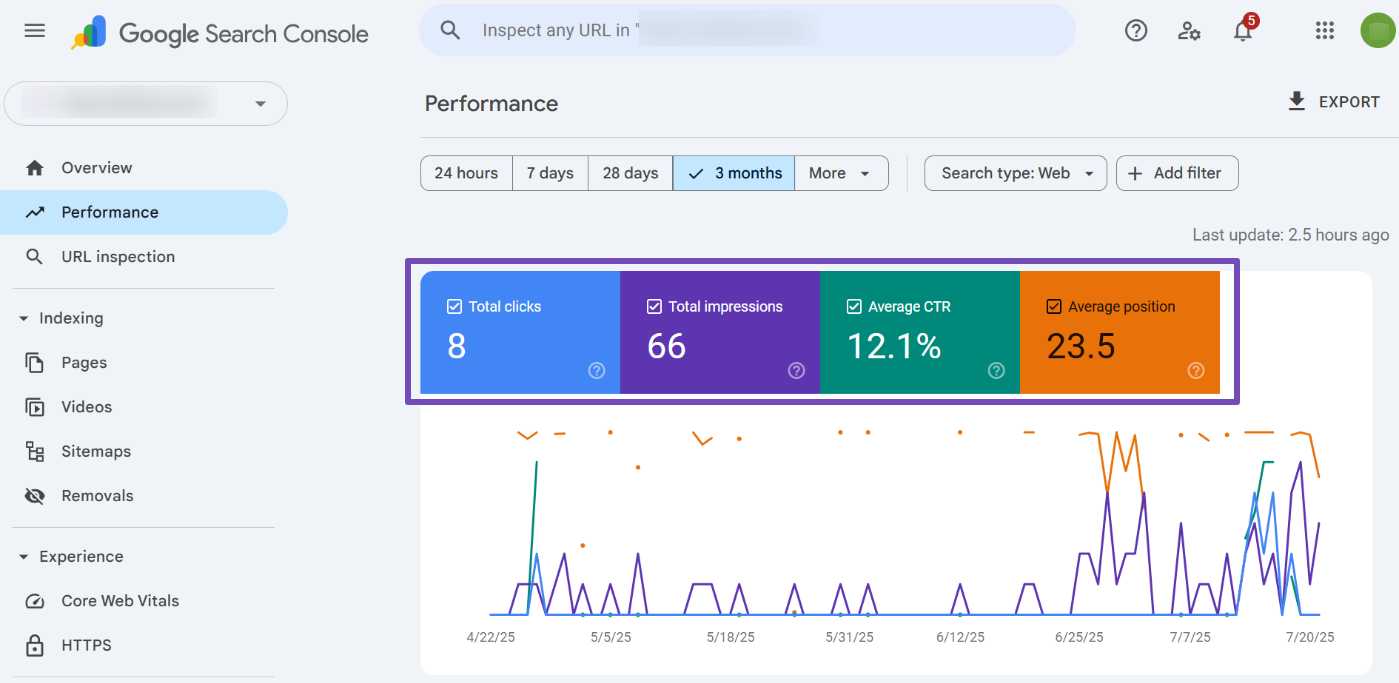
Start by analyzing the Queries section, which lists the specific search terms the audience entered to find your site. This section is particularly useful for identifying which keywords drive traffic to your website.
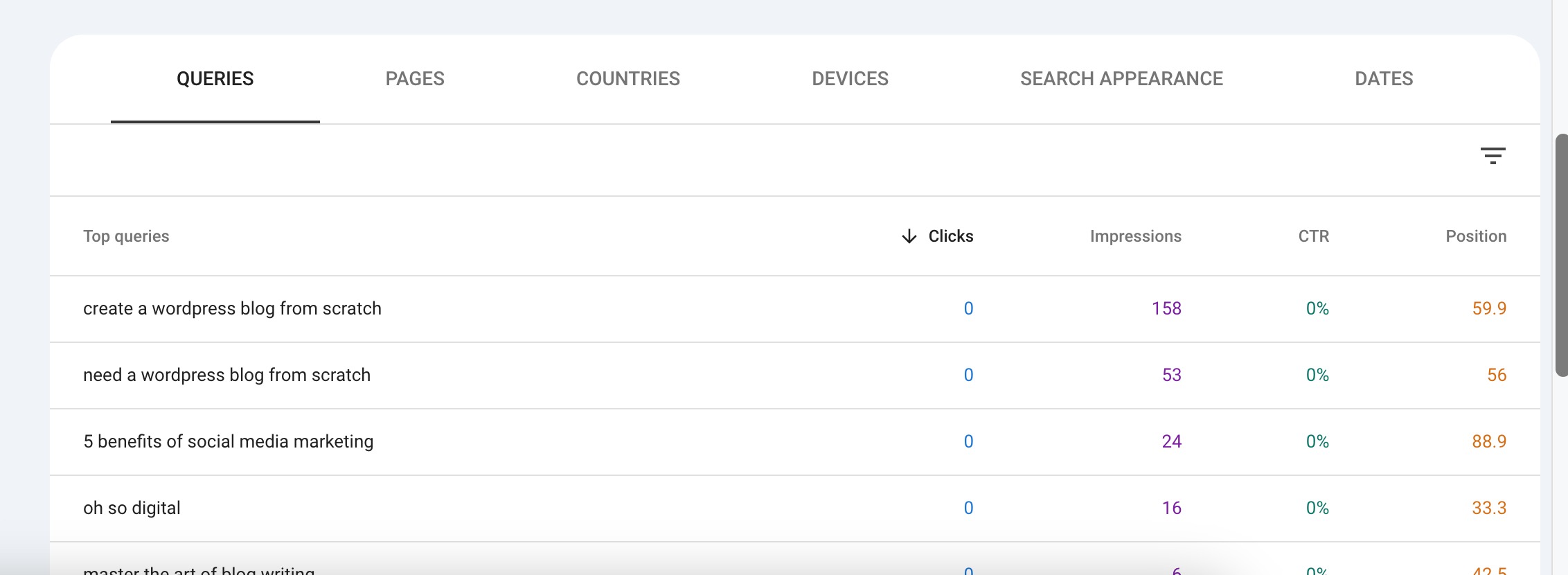
Export the data in Google Sheets, Excel, or CSV files.
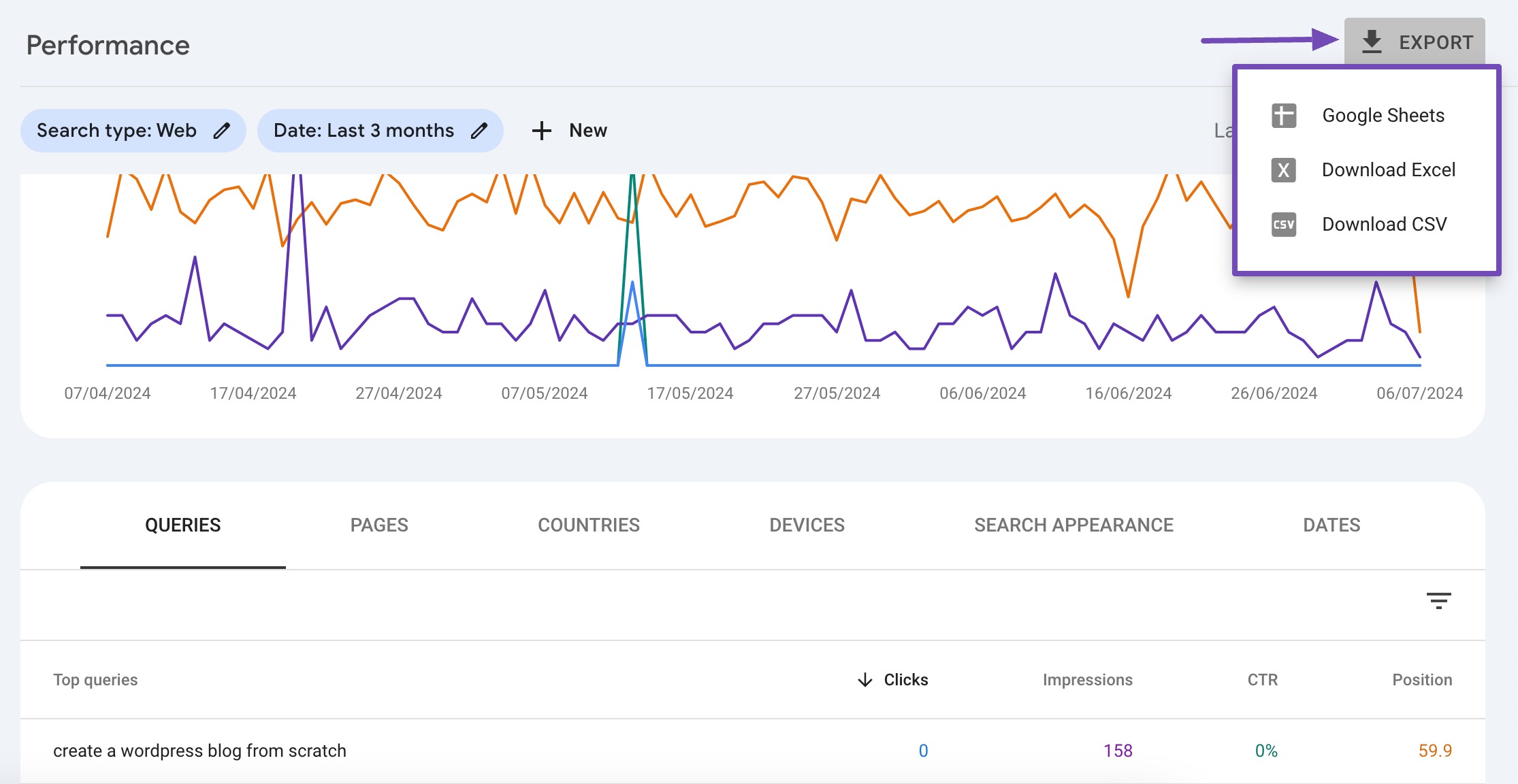
Identify keywords with high impressions but low CTR. These keywords indicate that your site is being noticed but not clicked on. Improving your title tags and meta descriptions to make them more appealing can help increase CTR.
Also, look for keywords where your average position is lower than desired. These keywords may benefit from additional SEO efforts, such as improving on-page optimization, acquiring more backlinks, or creating more comprehensive and engaging content.
Rank Math PRO offers Rank Tracker to help you track the keyword performance of your selected keywords. It offers keyword tracking and historical data, automatically adds focus keywords from your posts and much more.
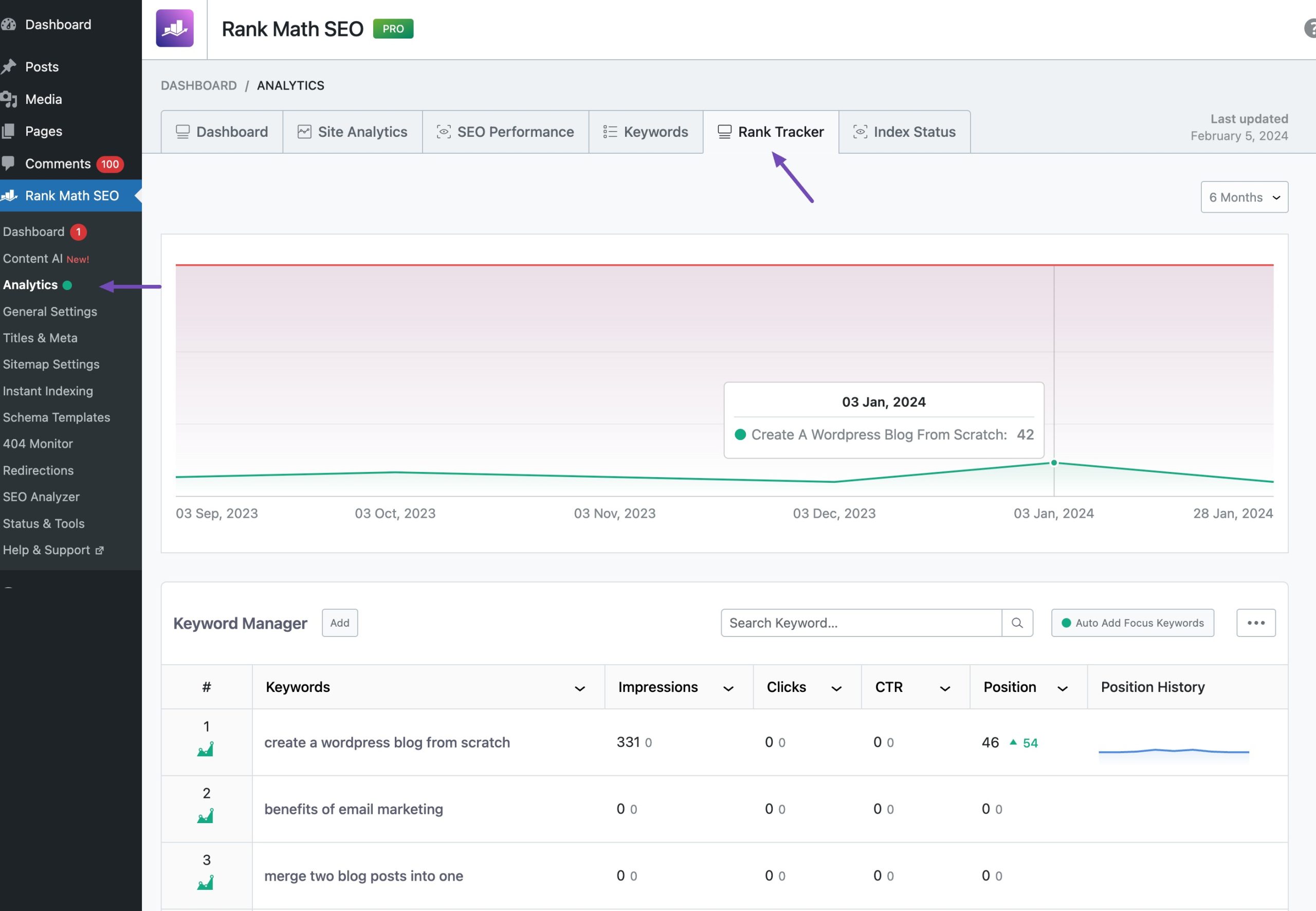
2.2 Find Keywords With Traffic Potential
Finding keywords with traffic potential is an important step in developing an effective keyword strategy. Keywords with high traffic potential are frequently searched by audiences and can drive significant organic traffic to your website.
You need to balance search volume, relevance, and competition to identify these keywords.
Start by using keyword research tools like Google Keyword Planner, Ahrefs, and Semrush. These tools provide valuable data on search volume, which indicates how often a keyword is searched for in a given period.
High search volume suggests that a keyword can potentially drive more traffic. However, it’s essential to ensure that the keyword is relevant to your business and the content you plan to create.

In addition to search volume, consider the keyword difficulty, which measures how competitive it is to rank for a particular keyword. High-competition keywords might have a lot of traffic potential but can be challenging to rank for, especially for new or smaller websites.
Instead, look for a balance by targeting long-tail keywords with decent search volume but lower competition.
For instance, instead of targeting the broad and highly competitive keyword shoes, you can target the best running shoes for flat feet. This long-tail keyword may have a lower search volume but is more specific and has a higher conversion rate due to its specificity.
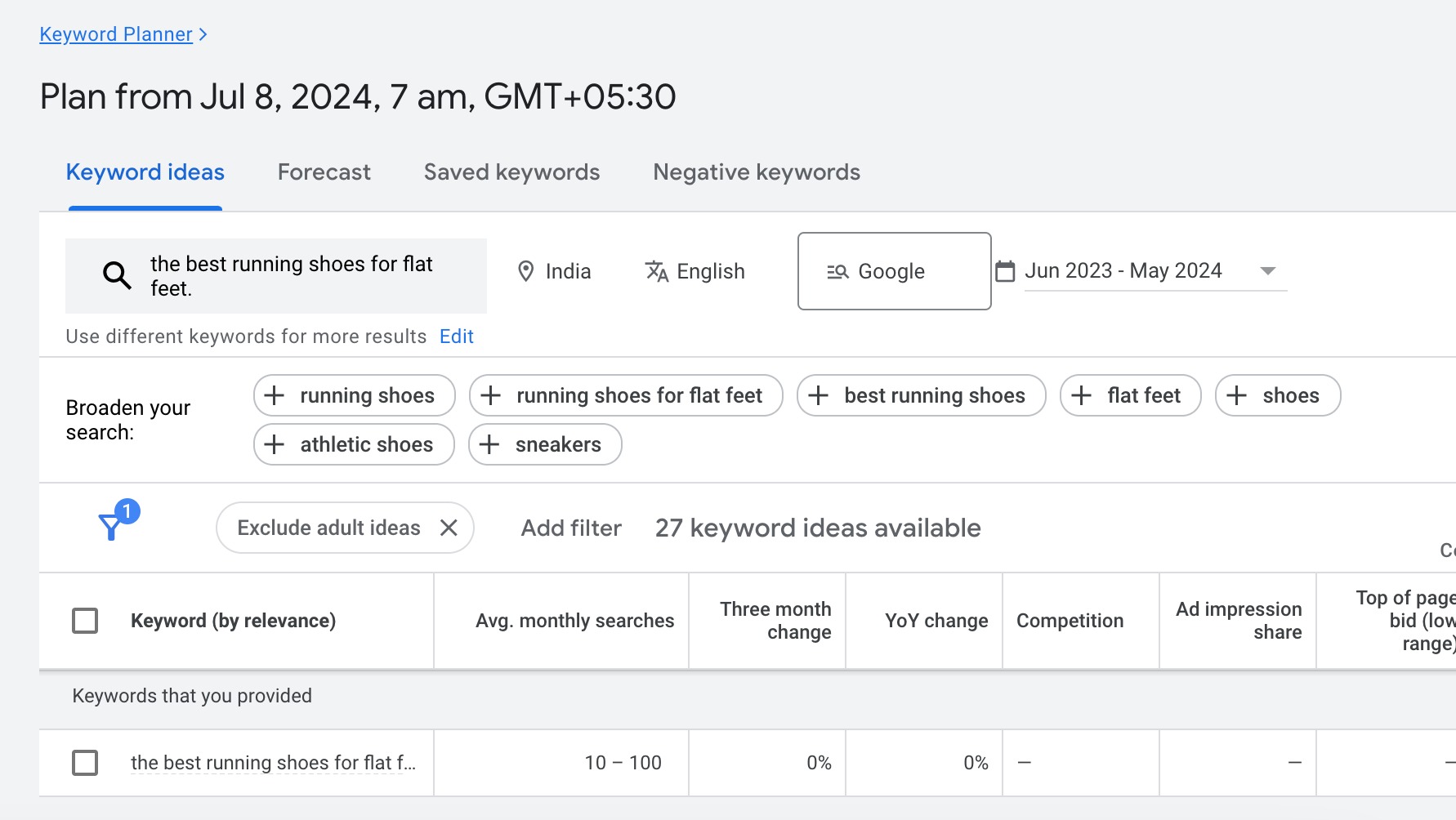
Furthermore, analyzing your competitors can help uncover keywords with traffic potential. Tools like Ahrefs and Semrush allow you to see the keywords your competitors rank for and their estimated traffic. This can provide insights into which keywords drive traffic to similar websites and help you identify opportunities you might have missed.
Refer to our dedicated tutorial on performing competitive analysis to find the missed opportunities.
2.3 Evaluate Keyword Intent
Keyword intent refers to the purpose behind an audience search, and it’s necessary to determine which keywords to focus on and how to approach them.
Why is this important?
Because if you don’t meet the audience’s needs, you’re unlikely to rank well in search results.

For instance, ranking high for the keyword wireless headphones in a blog post will be challenging. This is because search results for this term are dominated by product listing ads and product pages, indicating a strong transactional intent.
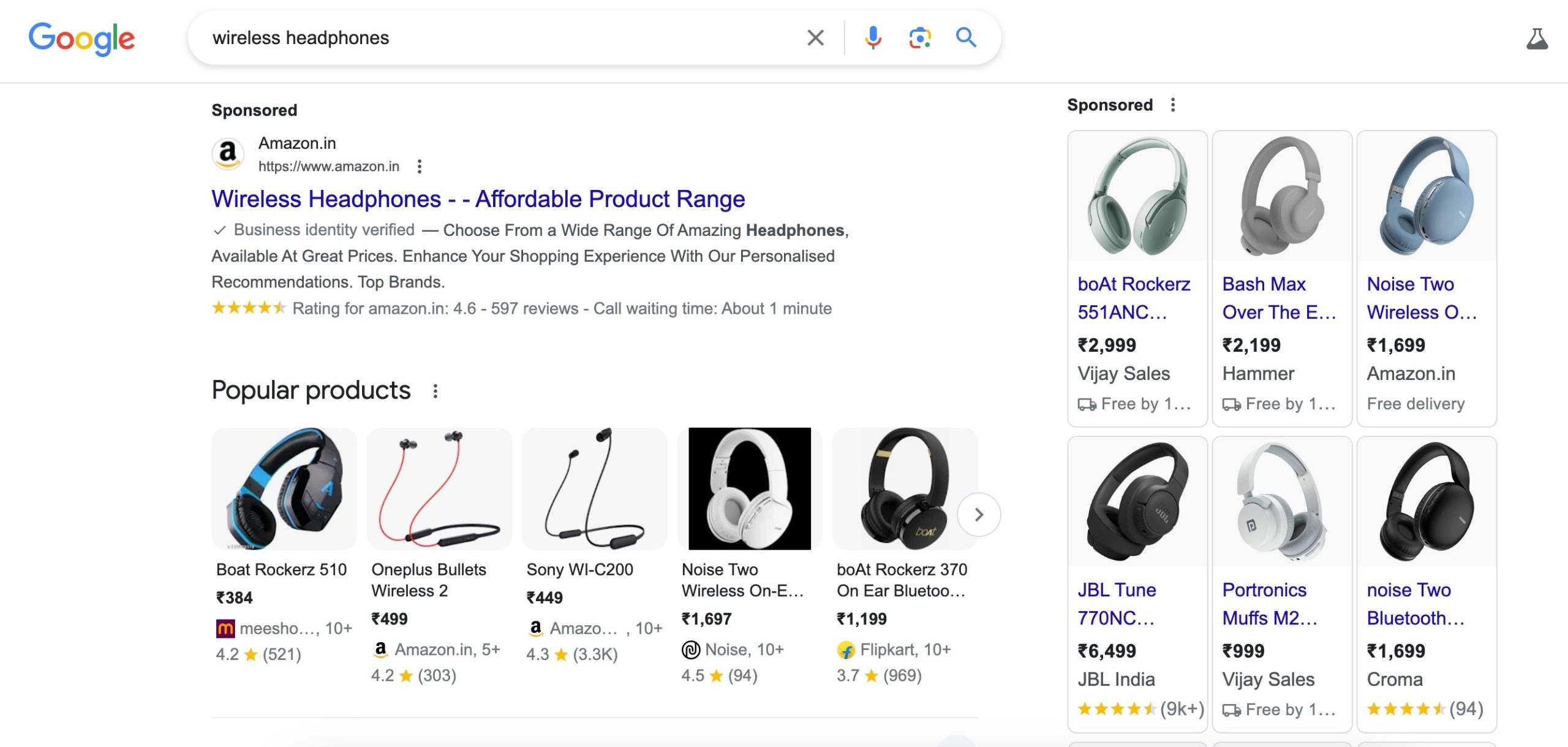
Keyword intent also reveals where the audience is in the marketing funnel and how likely they are to convert.
For instance, someone searching for the best wireless headphones is likely closer to making a purchase than someone searching for how wireless headphones work. The former keyword might deliver more immediate value because it targets audiences ready to buy.
You can easily optimize your content with Rank Math PRO’s Search Intent feature, which identifies the search intent of your primary keyword. Click the Show Intent label to view its intent or reorder keywords to analyze another one. This ensures your content aligns with the right intent for better rankings.
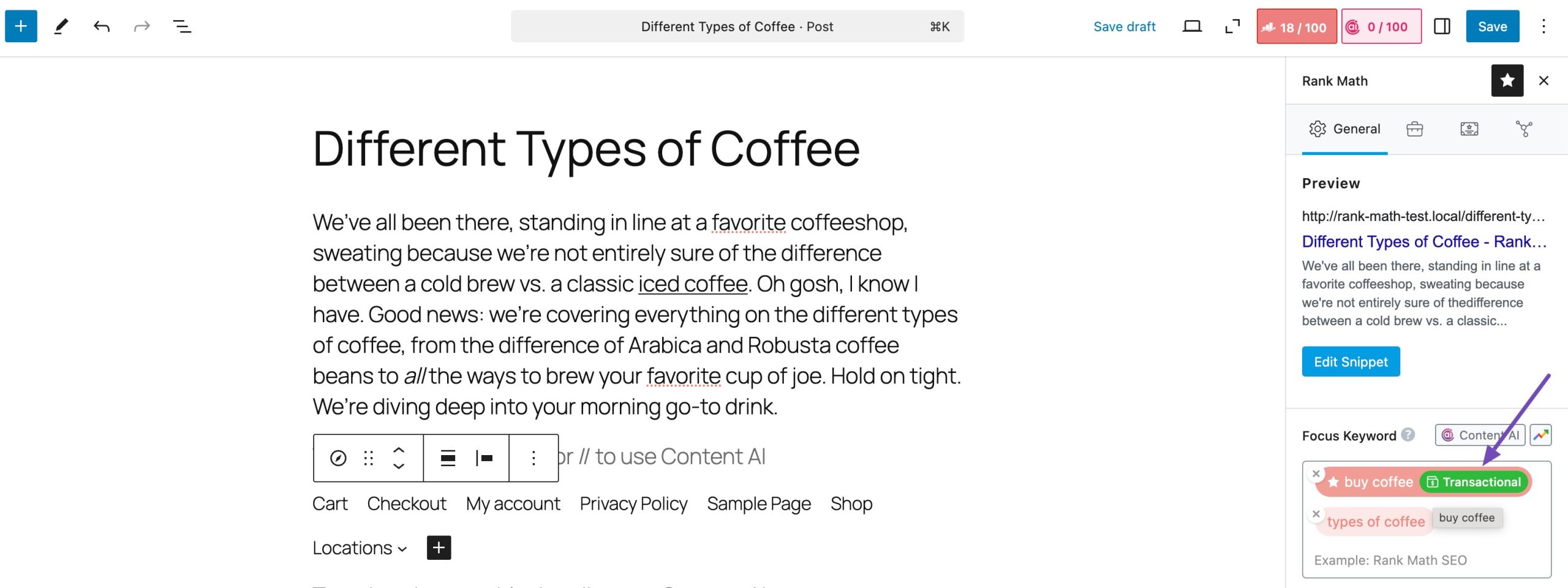
2.4 Assess Your Ranking Potential
Assessing your ranking potential is an important component of developing a keyword strategy, as it helps you determine the likelihood of your content ranking high in search engine results pages (SERPs) for specific keywords.
First, analyze the keyword difficulty. Keyword difficulty is a metric that indicates how hard it will be to rank for a particular keyword.
You can use tools like Ahrefs and Semrush to analyze the keyword difficulty scores. High difficulty means more competition, making it harder for new or smaller websites to rank.
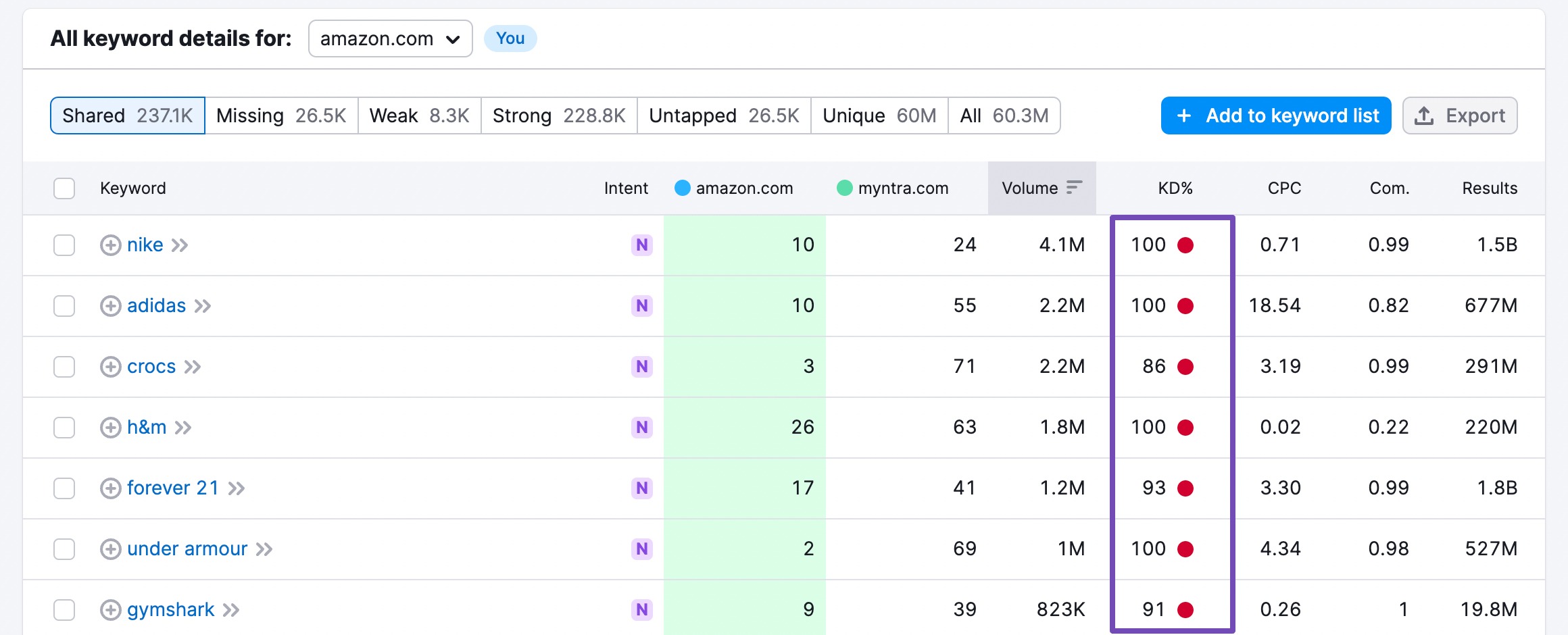
Next, evaluate domain authority. Domain authority (DA) is a score that predicts how well a website will rank on SERPs. Websites with higher DA generally have a better chance of ranking for competitive keywords.
Ensure that your content matches or exceeds the quality currently ranking for your target keywords. High-quality, comprehensive, and relevant content is more likely to rank well.
Rank Math’s Content AI will help you create high-quality and relevant content for your website.
Backlinks are a significant ranking factor. Assess your ability to acquire backlinks for your target keywords. If the top-ranking pages for a keyword have numerous high-quality backlinks, you’ll need a strategy to earn comparable backlinks to compete.
You can also find competitors’ backlinks and further enhance your SEO efforts.
5 Conclusion
Creating a successful keyword strategy is essential for improving your website’s visibility and driving targeted traffic.
By understanding and evaluating keyword intent, researching keywords with high traffic potential, reviewing your existing rankings, and assessing your ranking potential, you can develop a comprehensive plan that aligns with your business goals and audience needs.
Remember, SEO is dynamic, and search engine algorithms constantly evolve. Regularly monitor your performance using tools like Google Search Console, and be prepared to adjust your keyword strategy based on data insights and changing trends.
Ultimately, a well-executed keyword strategy boosts your search engine rankings and ensures that you attract and retain the right audience, leading to higher engagement and conversions.
For sustained success in your SEO efforts, stay informed, be adaptable, and keep your audience at the center of your strategy.
If you like this post, let us know by Tweeting @rankmathseo.
